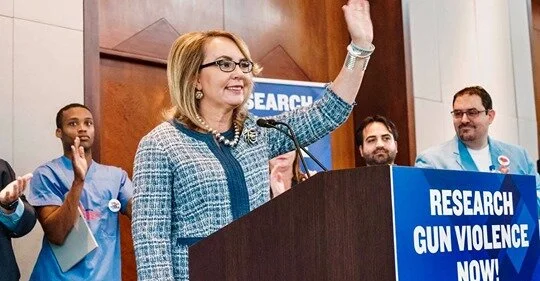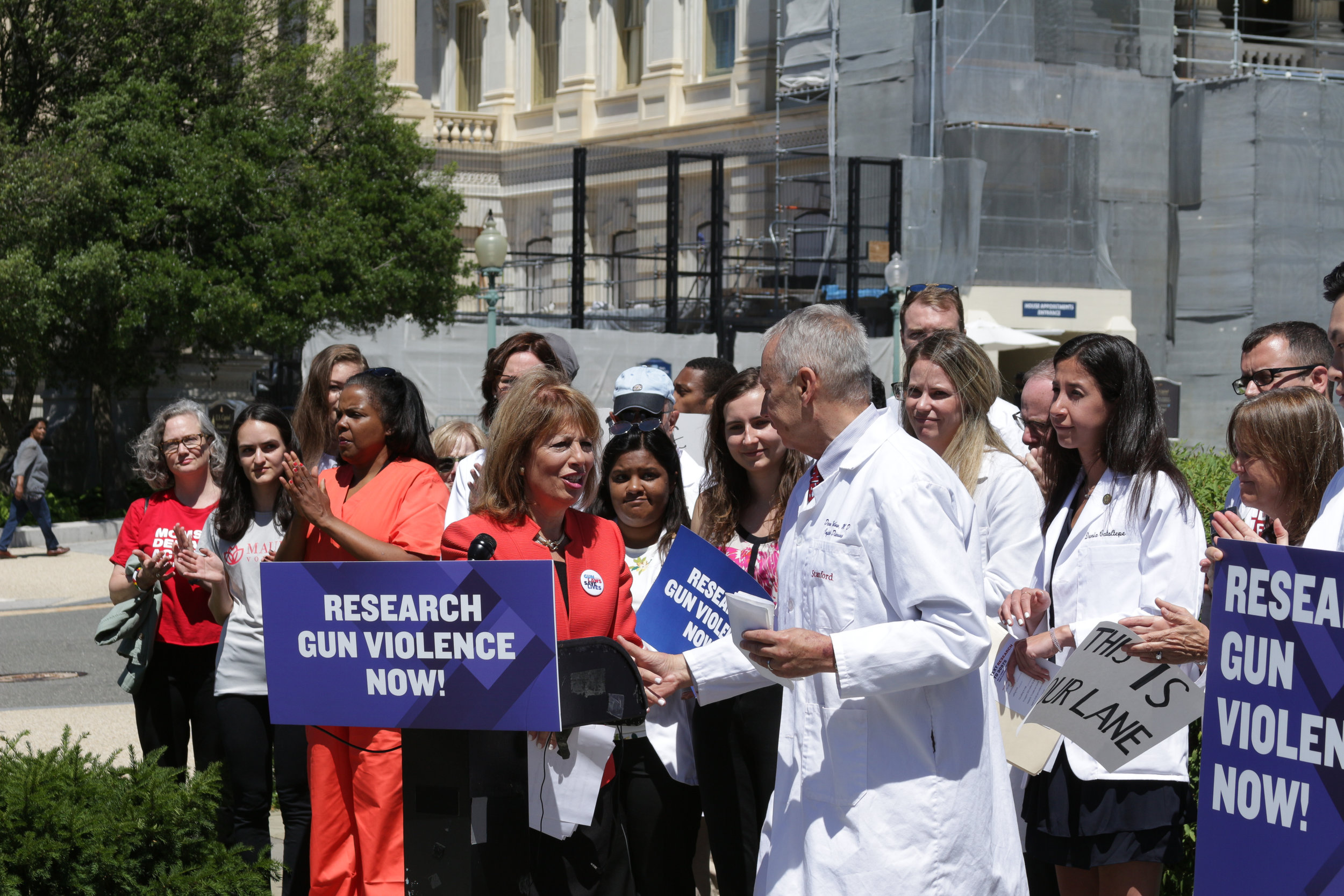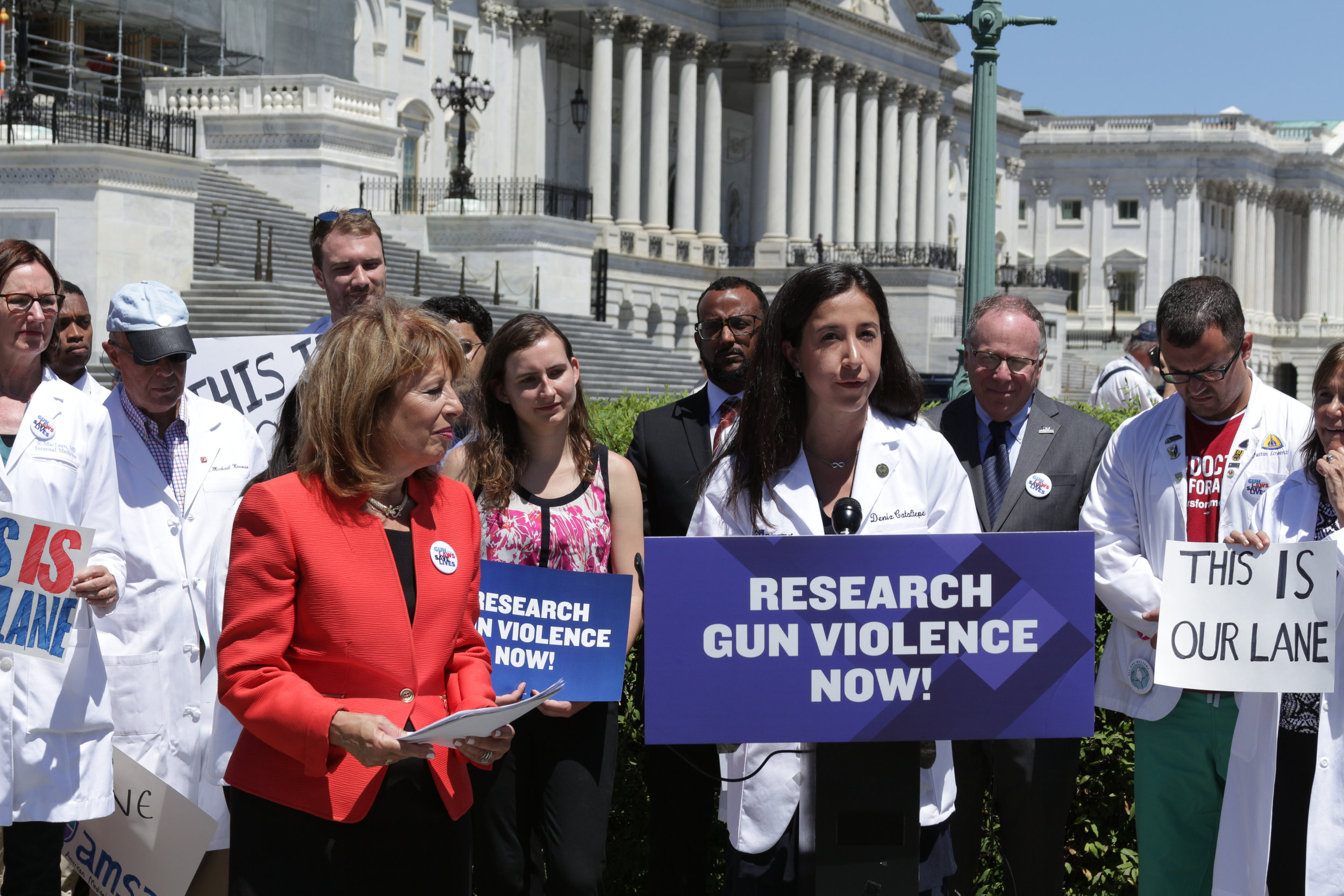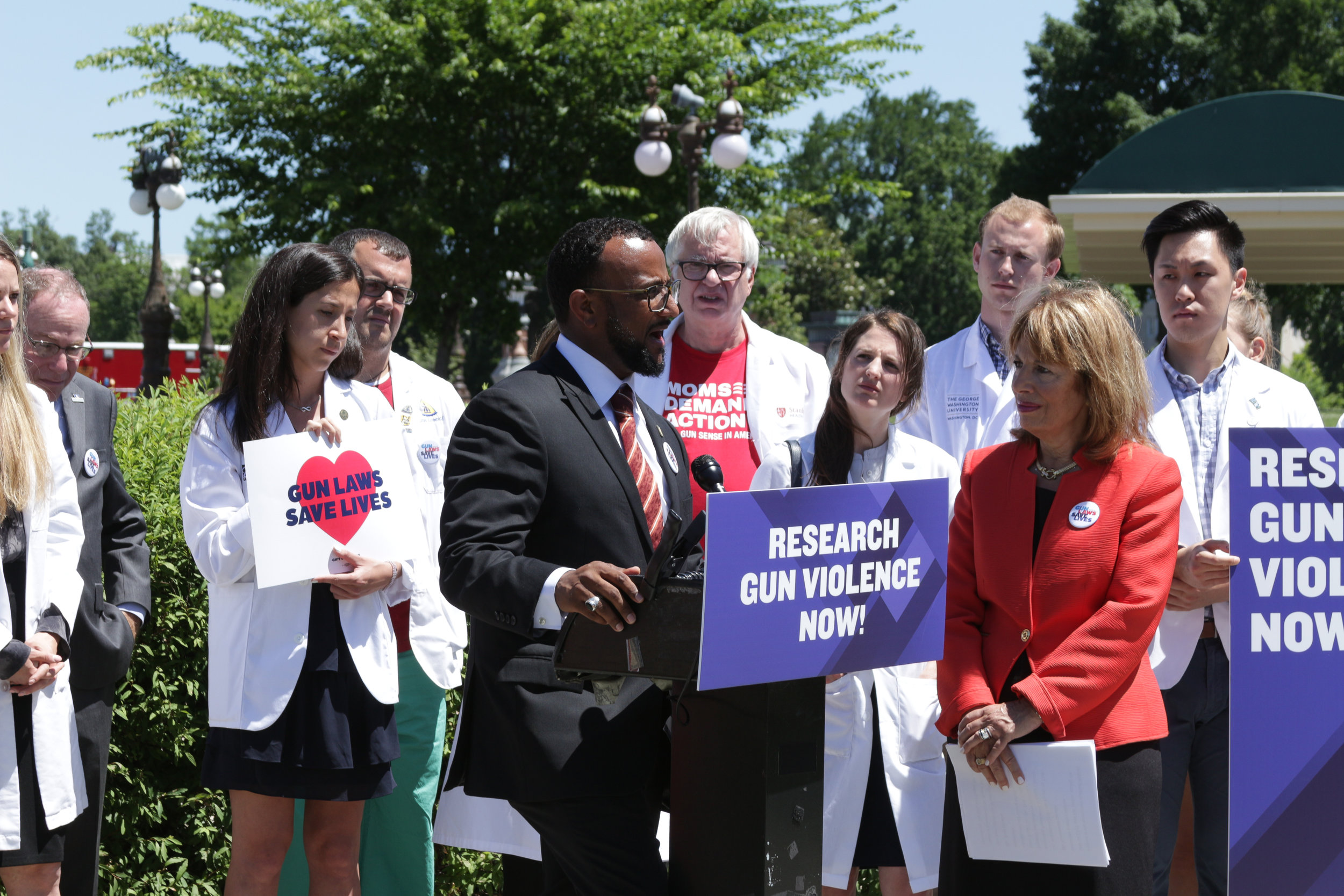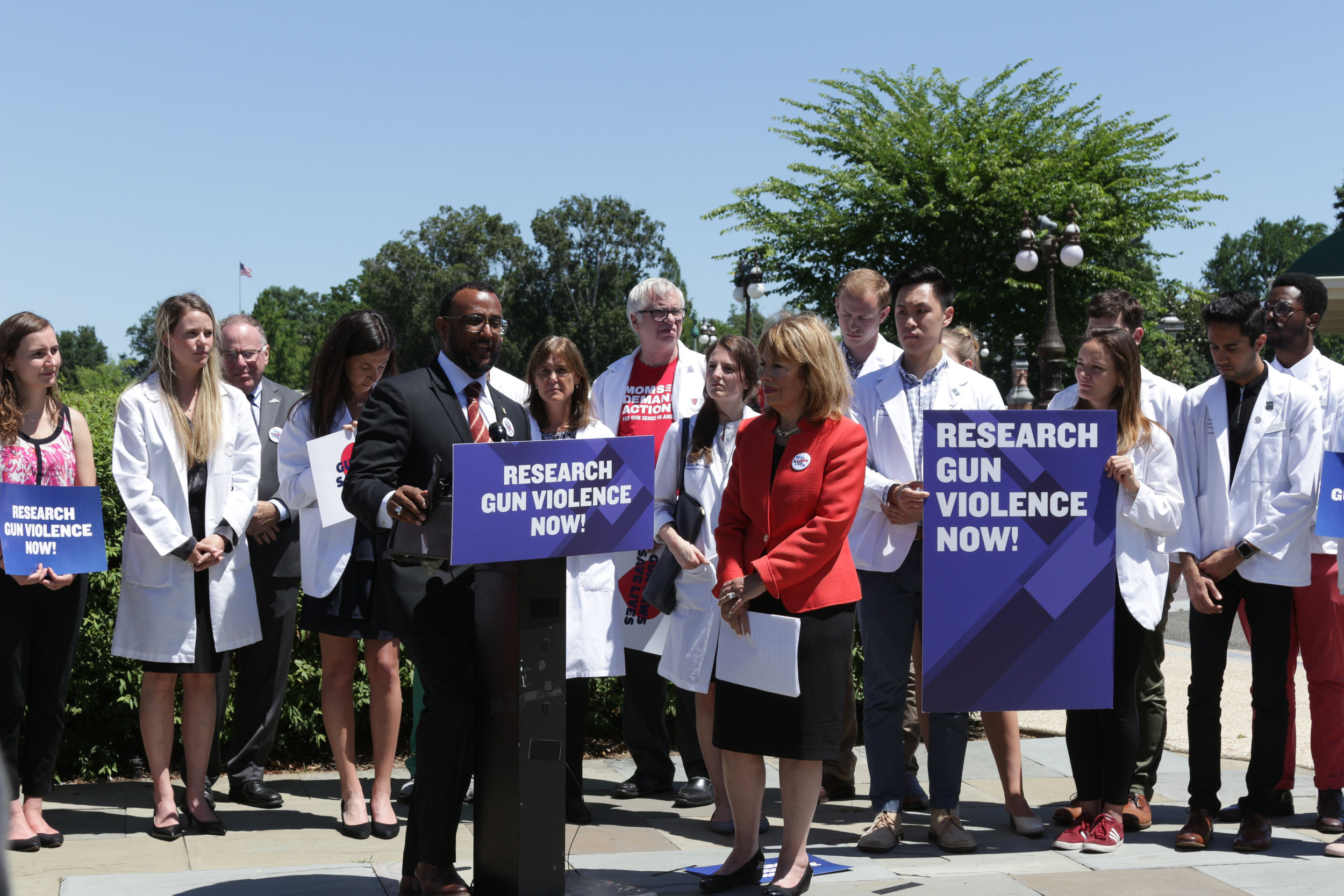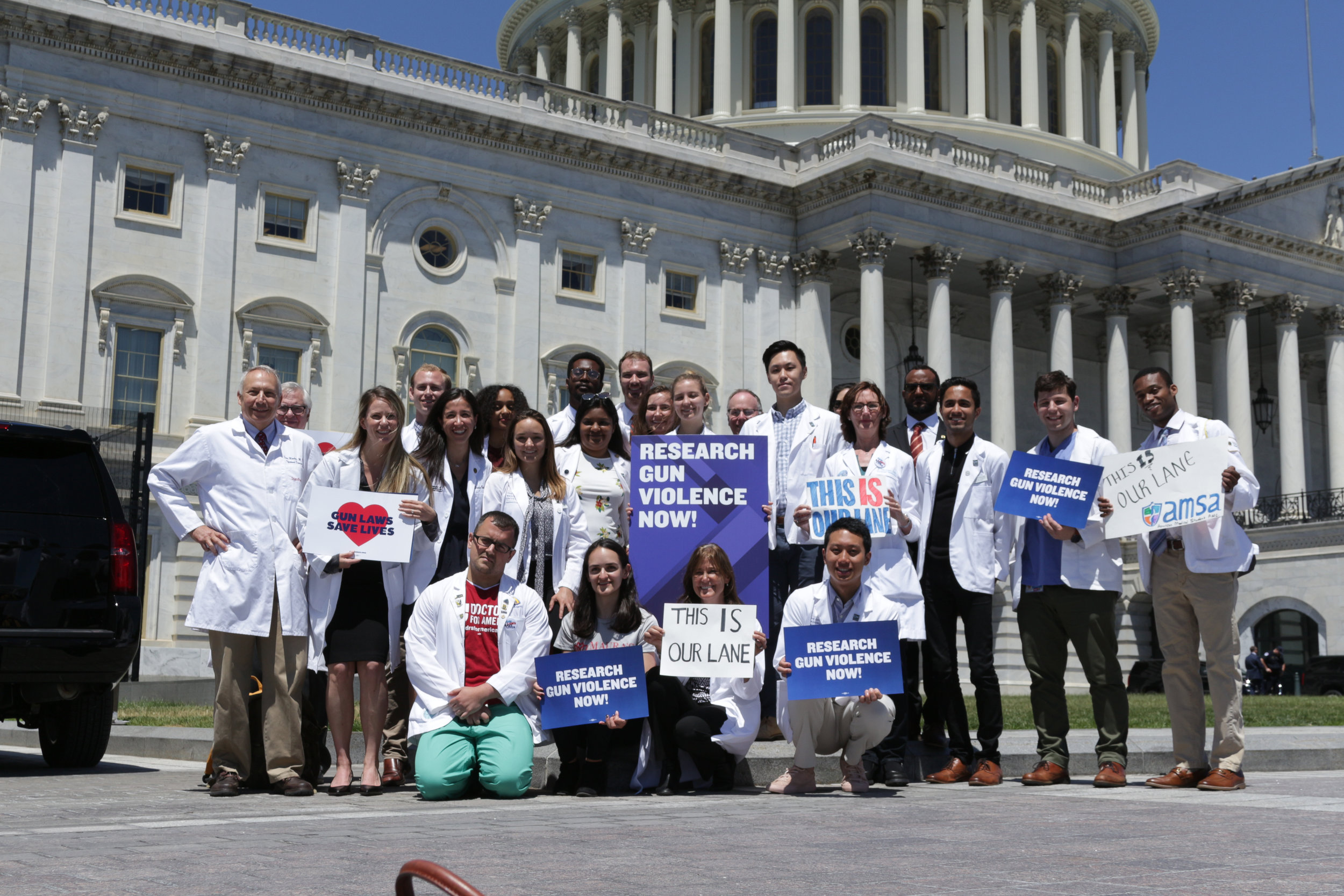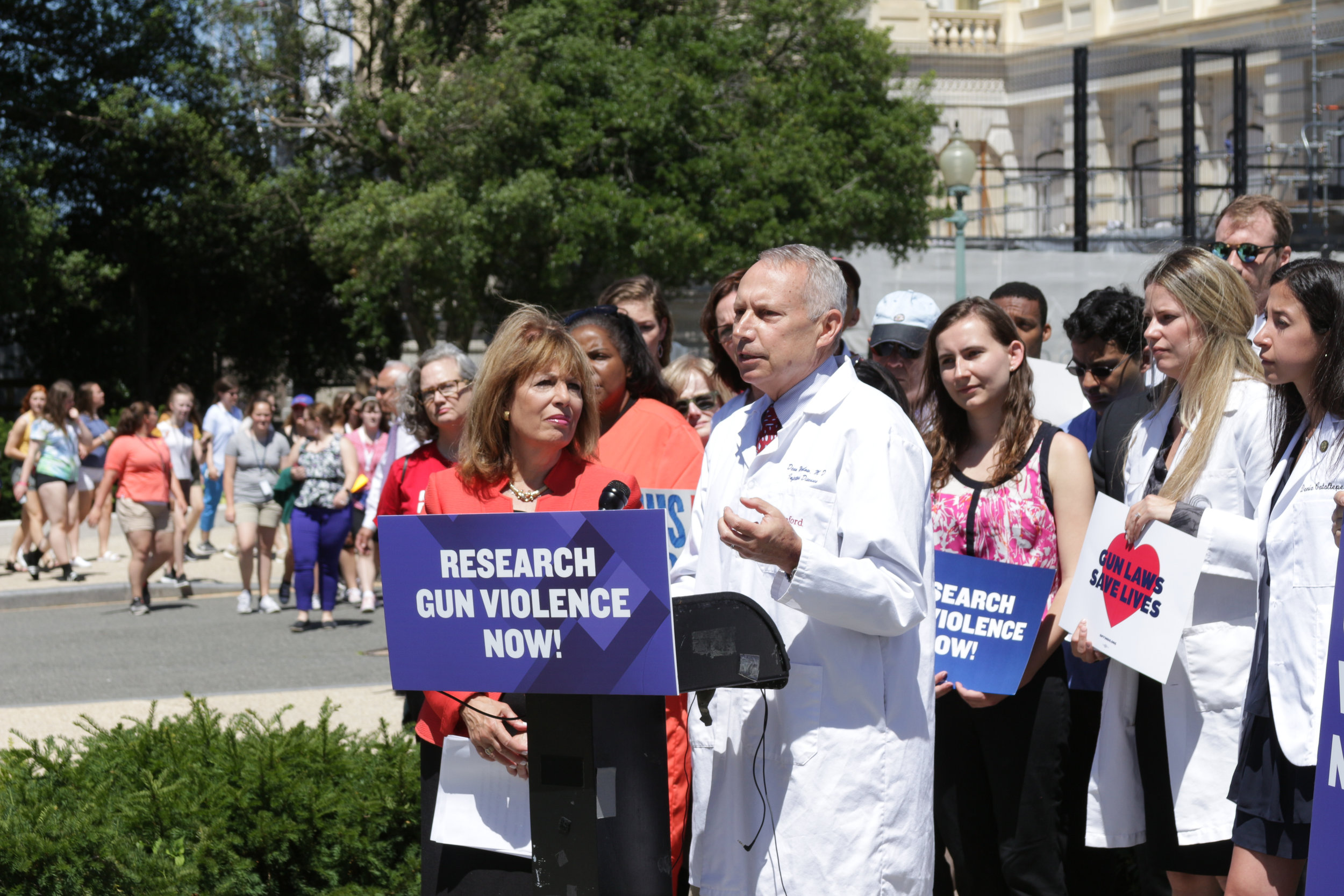[1]Centers for Disease Control and Prevention, CDC WONDER, “About Underlying Cause of Death, 1999-2016,” last accessed July 6, 2020, https://wonder.cdc.gov/ucd-icd10.html.
[2]Everytown, Everystat, last accessed July 6, 2020, https://everytownresearch.org/everystat.
[3]Bindu Kalesan, et al., “Cross-Sectional Study of Loss of Life Expectancy at Different Ages Related to Firearm Deaths Among Black and White Americans,” BMJ Evidence-Based Medicine 24, no. 2 (2018).
[4]Giffords Law Center, “Gun Violence Statistics,” last accessed July 6, 2020, https://lawcenter.giffords.org/facts/gun-violence-statistics/.
[5]Aldina Mesic, et al., “The Relationship Between Structural Racism and Black-White Disparities in Fatal Police Shootings at the State Level,” Journal of the National Medical Association 110, no. 2 (2018): 106-116.
[6]Michelle C. Kondo, et al., “The Association Between Urban Tree Cover and Gun Assault: A Case-Control and Case-Crossover Study,” American Journal of Epidemiology 186,no. 3. (2017): 289-296.
[7]Yasemin Irvin-Erickson, et al., “A Neighborhood-Level Analysis of the Economic Impact of Gun Violence,” Urban Institute, June 2017, https://www.urban.org/sites/default/files/publication/90671/eigv_final_report_3.pdf.
[8]Matthew Benns, et al., “The Impact of Historical Racism on Modern Gun Violence: Redlining in the City of Louisville, KY,” Injury(2020).
[9]William J. Hall, et al., “Implicit Racial/Ethnic Bias Among Health Care Professionals and its Influence on Health Care Outcomes: A Systematic Review,” American Journal of Public Health105, no. 12 (2015): e60-76.
[10]N.R. Kressin and L.A. Petersen, “Racial Differences in the Use of Invasive Cardiovascular Procedures: Review of the Literature and Prescription for Future Research,” Annals of Internal Medicine 135, no. 5 (2001): 352-366.
[11]L.F. McMahon Jr., et al., “Racial and Gender Variation in Use of Diagnostic Colonic Procedures in the Michigan Medicare Population,” Medical Care37, no. 7 (1999): 712-717.
[12]R.D. Moore, D. Stanton, R. Gopalan, and R.E Chaisson, “Racial Differences in the Use of Drug Therapy for HIV Disease in an Urban Community,” New England Journal of Medicine330 (1994): 763-768.
[13]Aaron E. Carroll, “Doctors and Racial Bias: Still a Long Way to Go,” New York Times, February 25, 2019, https://www.nytimes.com/2019/02/25/upshot/doctors-and-racial-bias-still-a-long-way-to-go.html.
[14]LaPrincess C. Brewer, et al., “Association of Race Consciousness with the Patient-Physician Relationship, Medication Adherence, and Blood Pressure in Urban Primary Care Patients,” American Journal of Hypertension 26, no. 11 (2013): 1346-1352.
[15]Giffords Law Center, “Healing Communities in Crisis,” last accessed July 6, 2020, https://lawcenter.giffords.org/wp-content/uploads/2019/01/Healing-Communities-in-Crisis.pdf.







